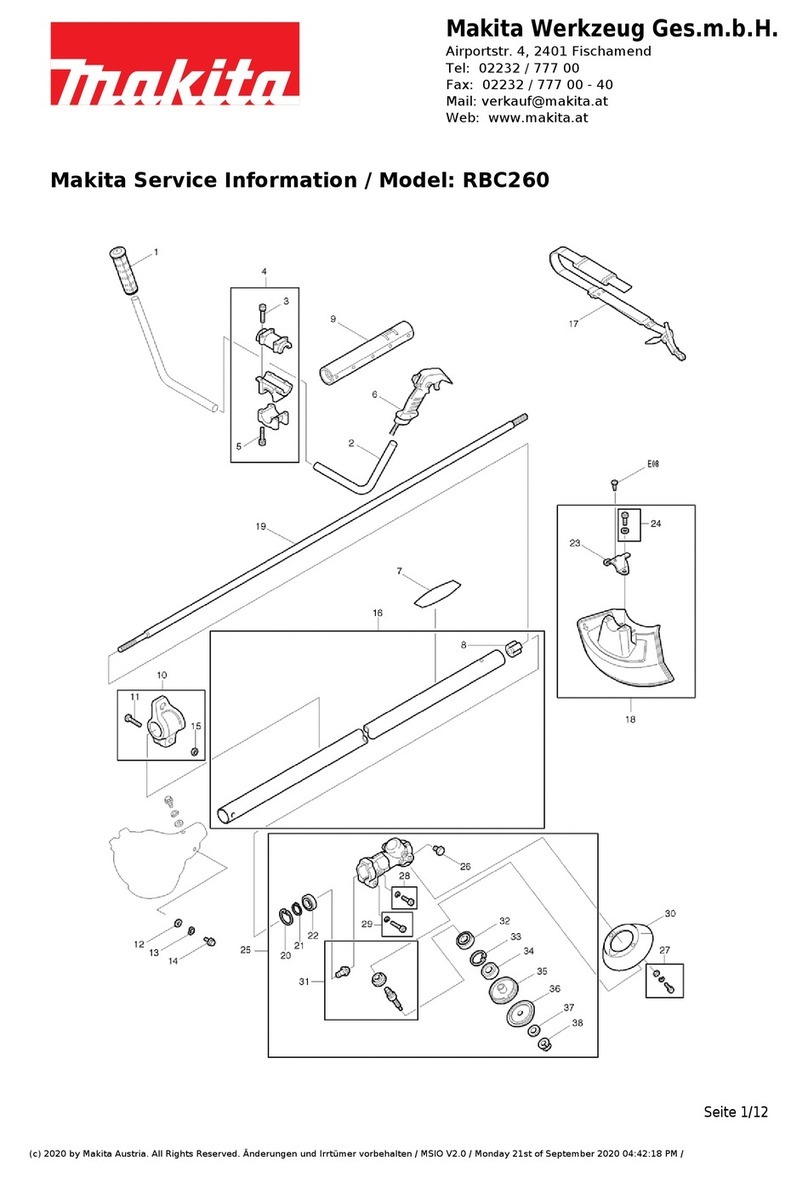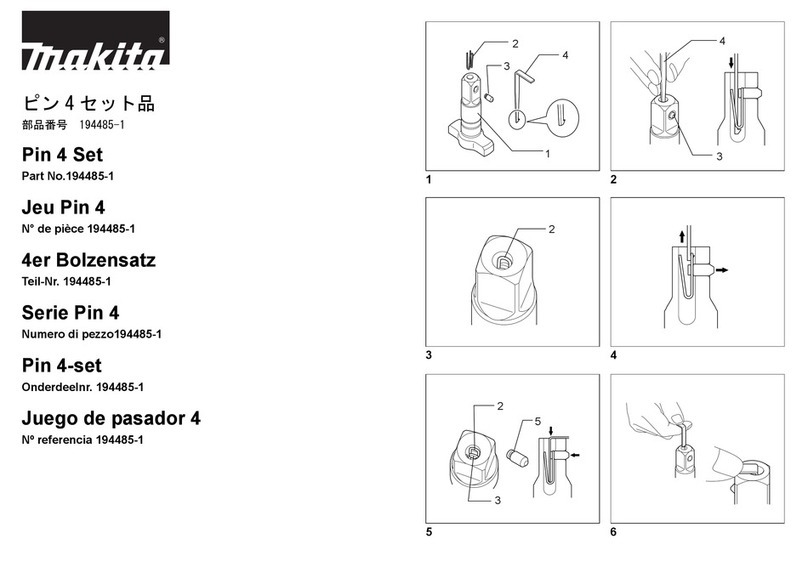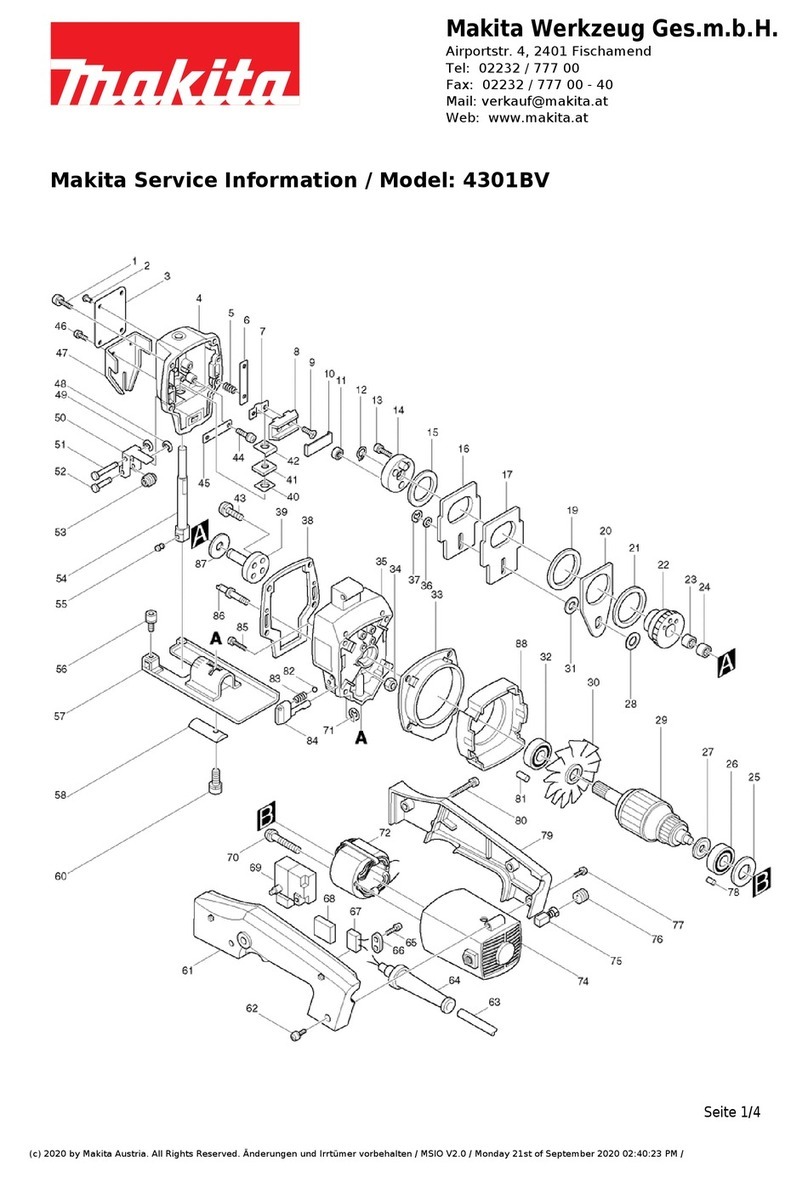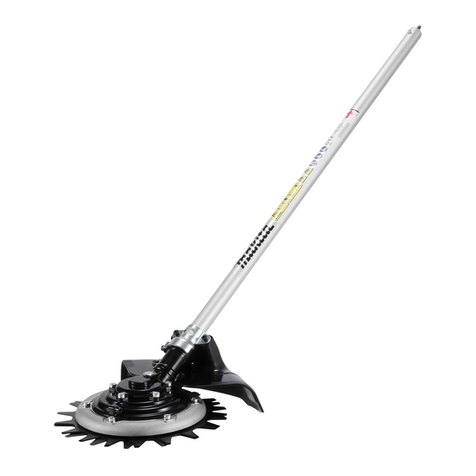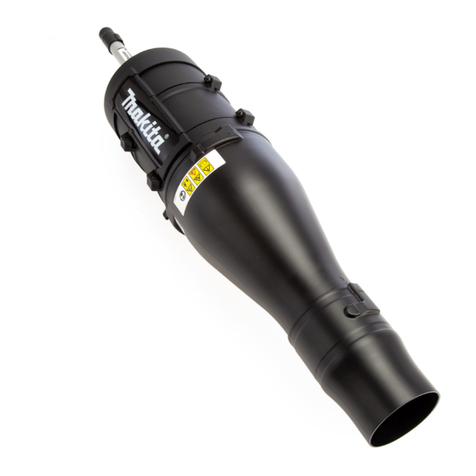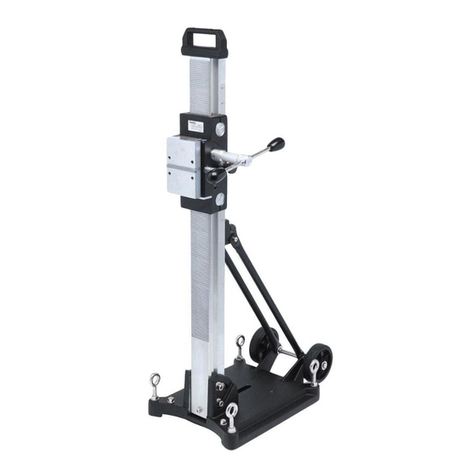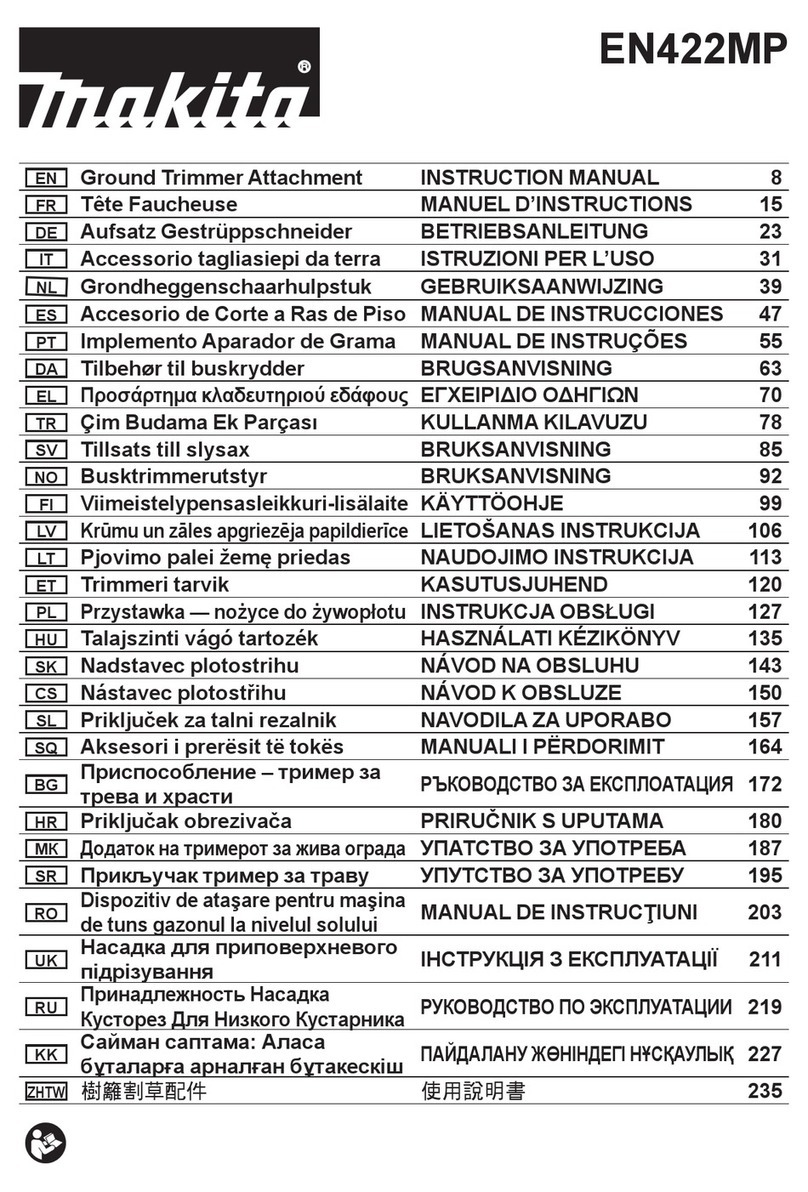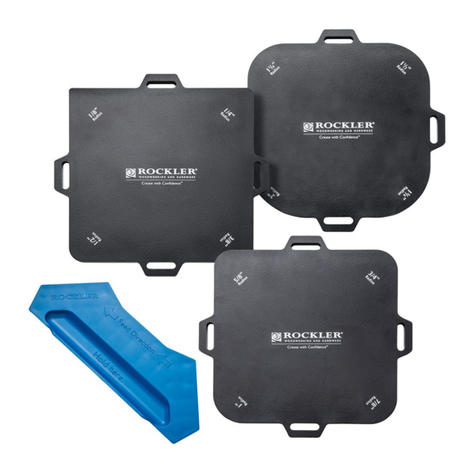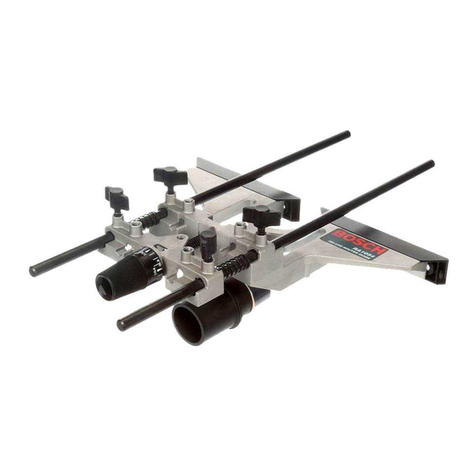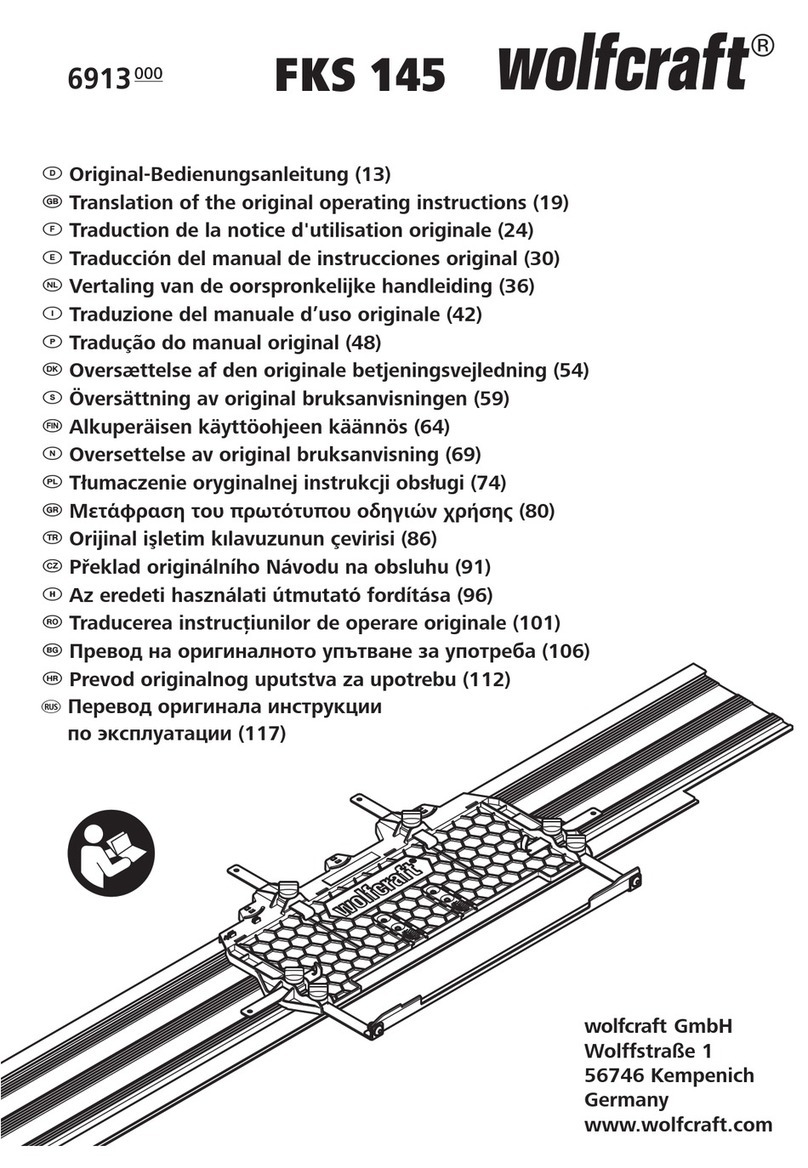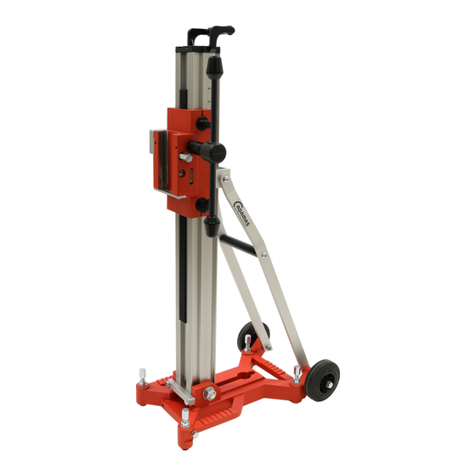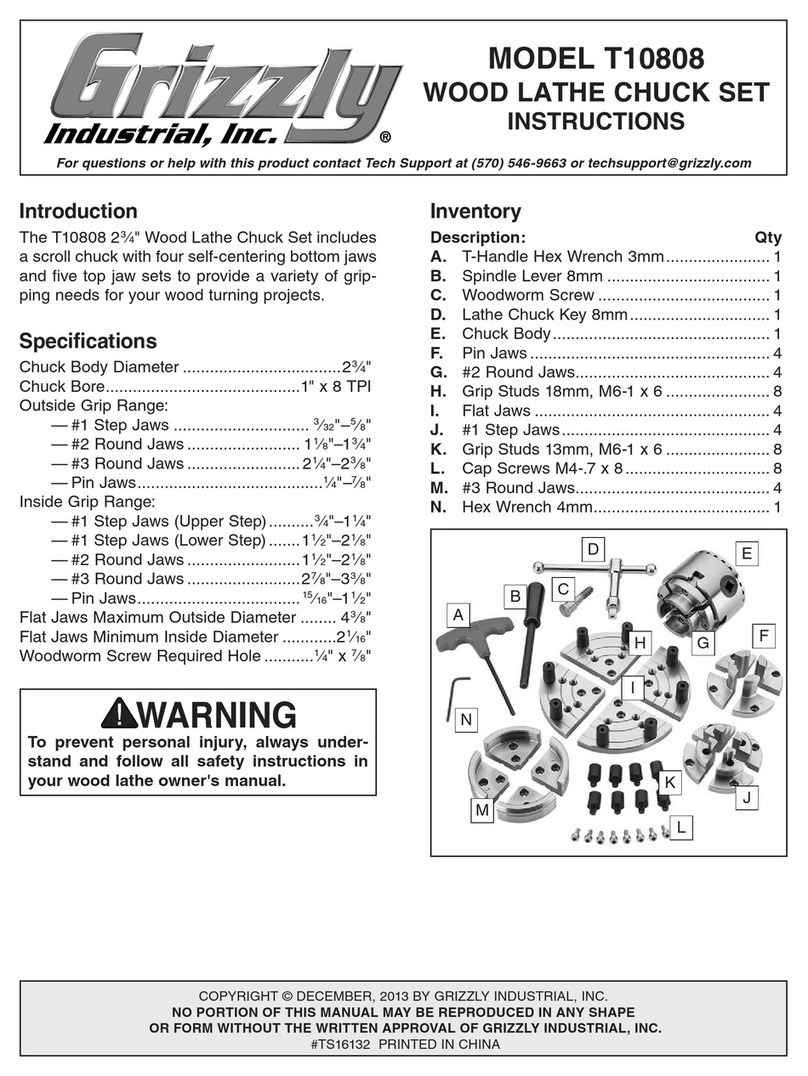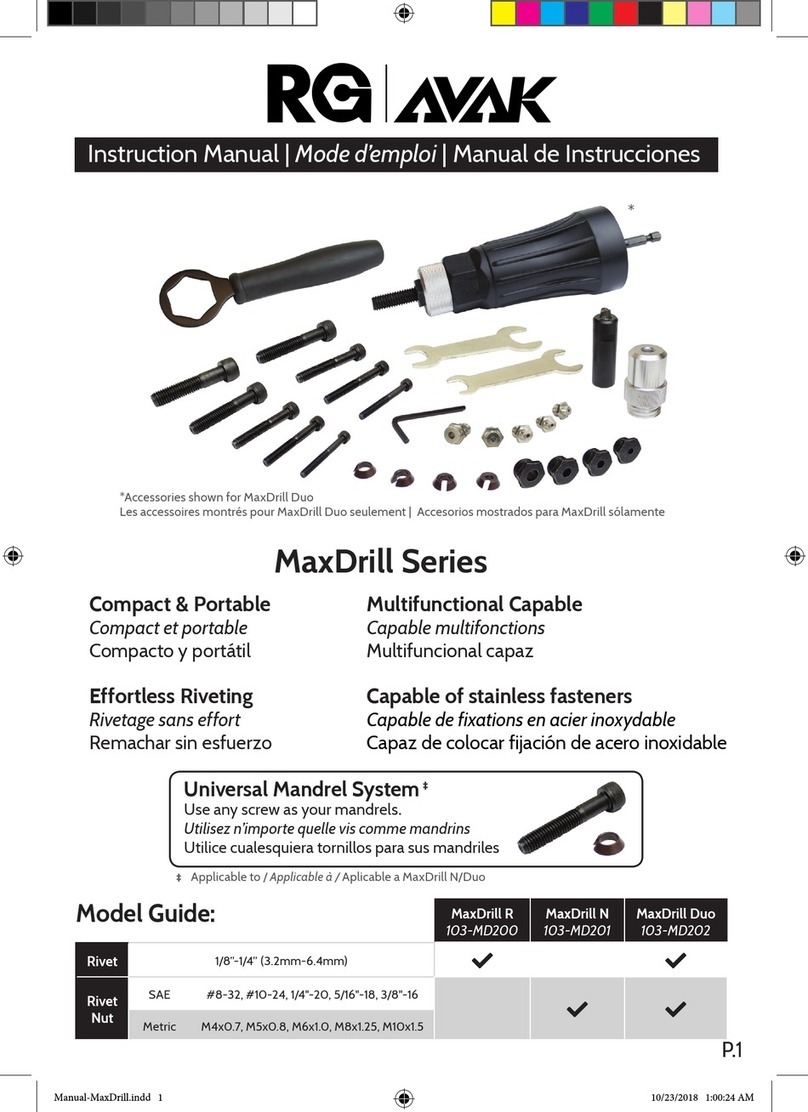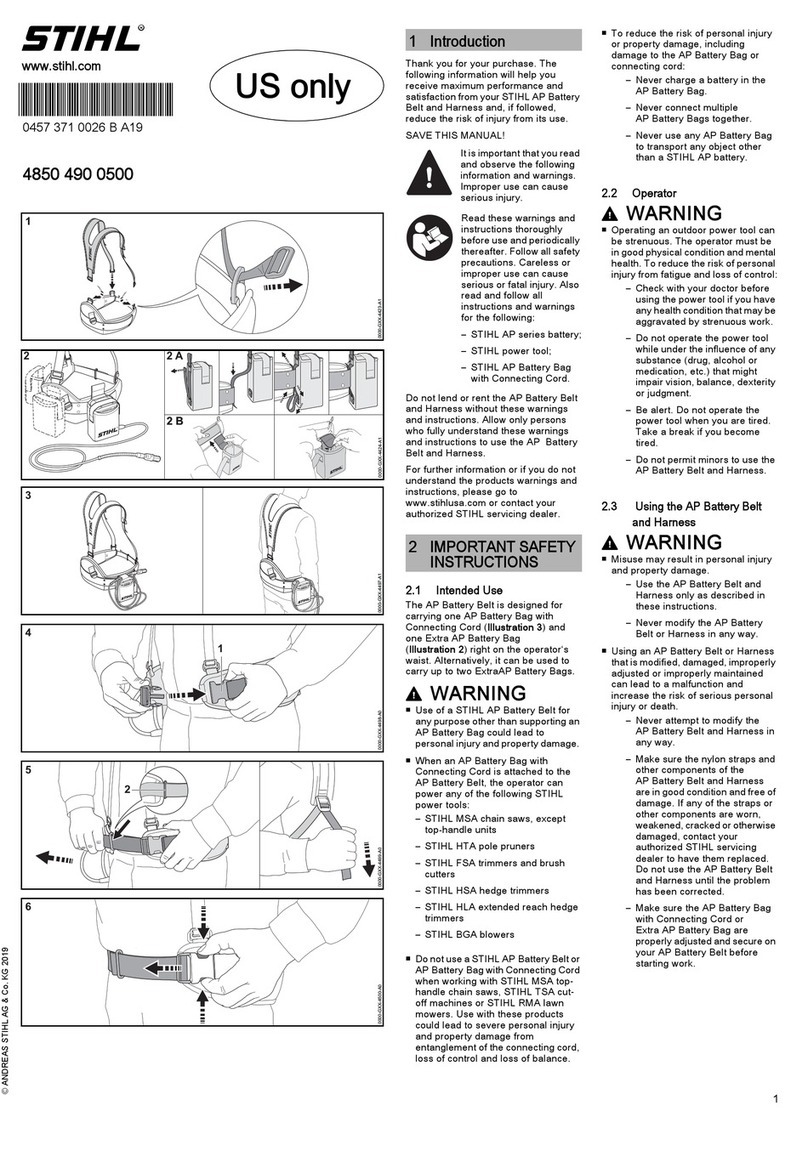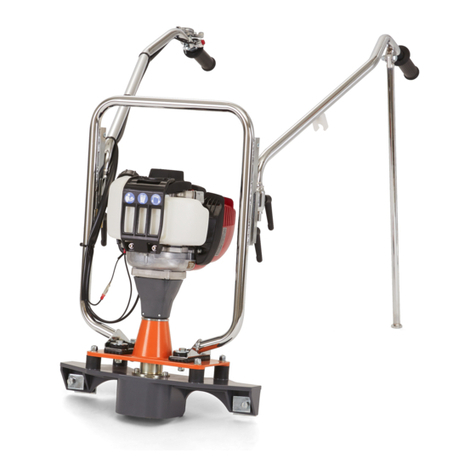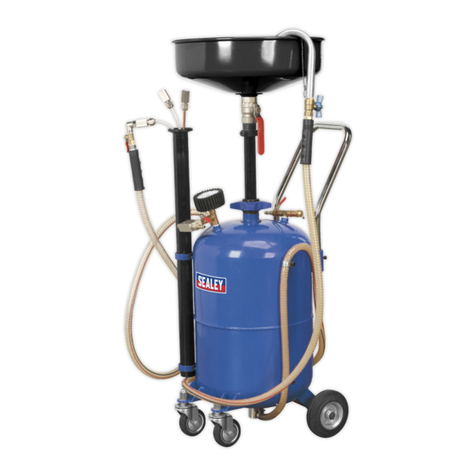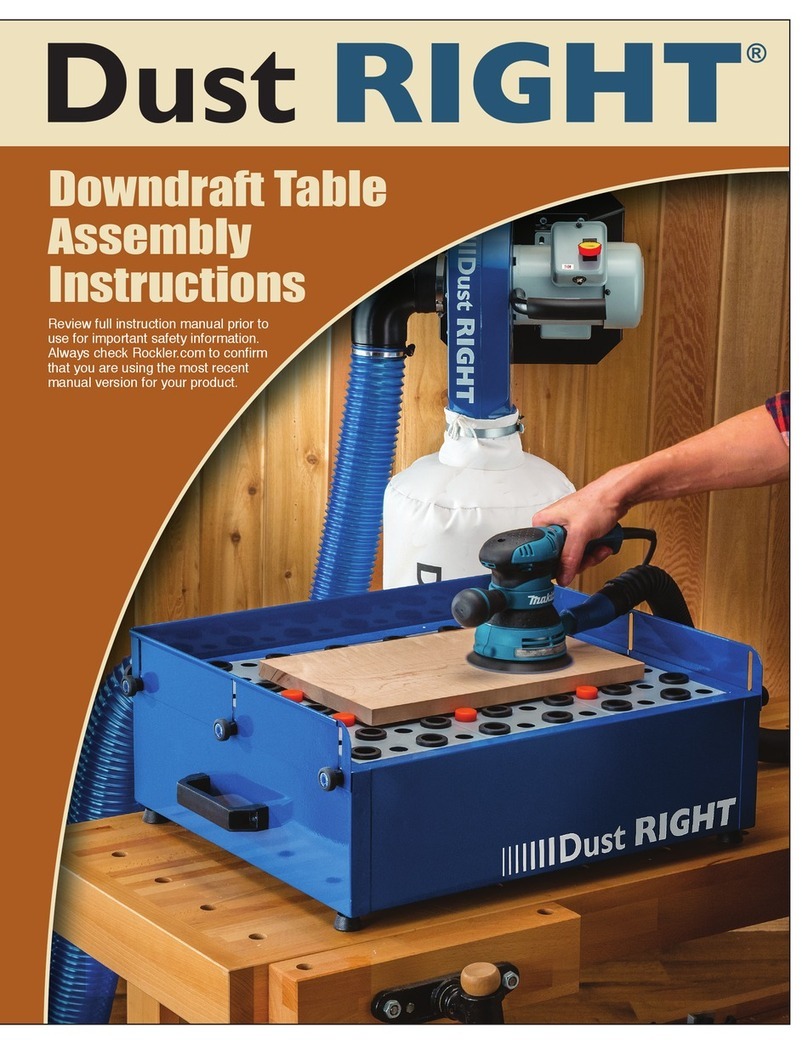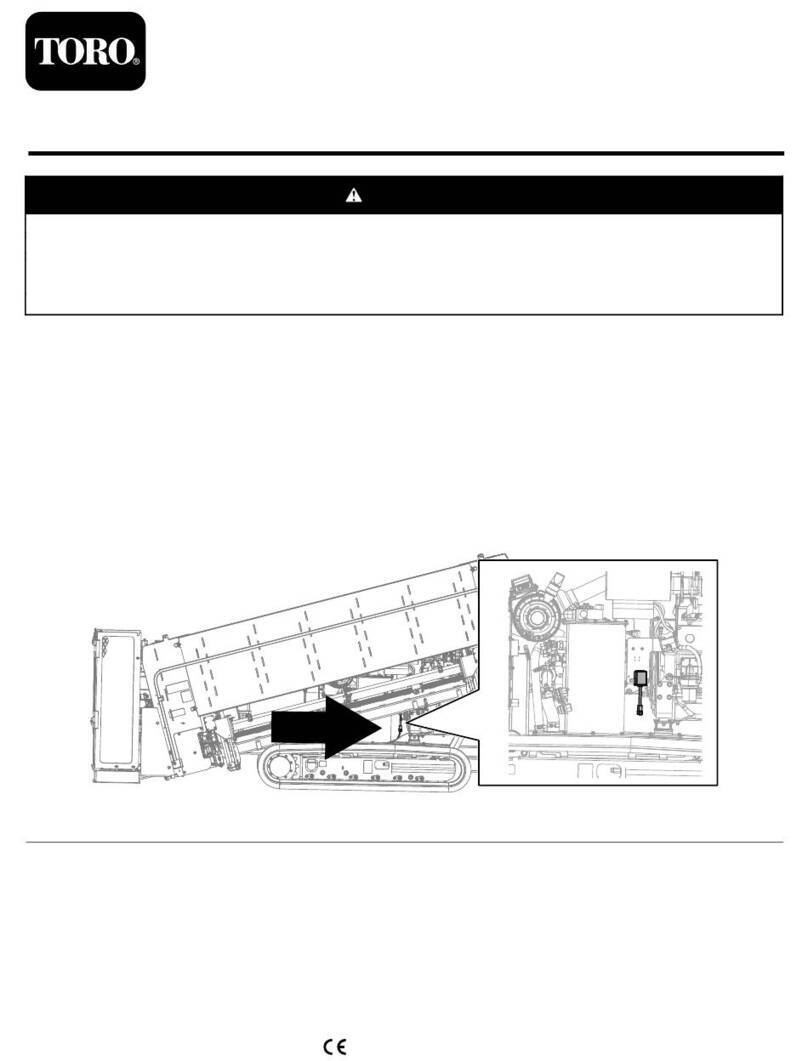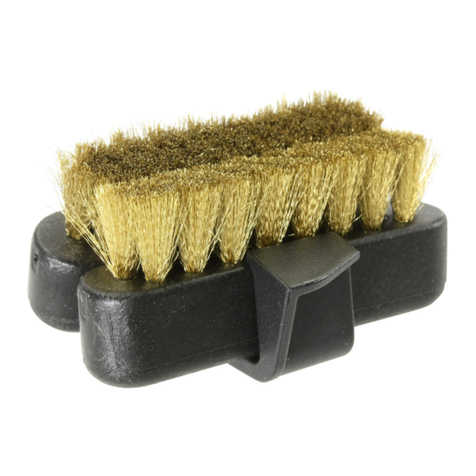
5
Deutsch
Verwendungszweck
Diese Vorrichtung dient dazu, weggeblasenen Staub und
Partikel beim Meißeln oder Bohren in Keramikmaterial,
wie z. B. Beton und Mörtel, aufzufangen.
WARNUNG: Bevor Sie die Staubabsaugung
anbringen oder abnehmen, vergewissern Sie
sich, dass das Werkzeug ausgeschaltet und vom
Stromnetz getrennt ist. Anderenfalls kann es zu
schweren Verletzungen kommen.
Komponenten (Abb. 1)
1. Staubfänger 1 Stück
2. Staubfängerverlängerung 2 Stück
3. Faltenbalg 2 Stück
4. Absaugstutzen
(Anwendbarer
Bohrerdurchmesser: max. 45 mm) 2 Stück
5. Absaugstutzen 25 1 Stück
6. Schlauchhalter 1 Stück
7. Tiefenanschlag
(Standardzubehör im Werkzeug) 1 Stück
8. Tiefenanschlagverlängerung 1 Stück
9. Halterverbindung 1 Stück
Zusammenbau (Abb. 2)
1. Trennen Sie das Werkzeug vom Stromnetz.
2. Lösen Sie den Seitengriff (10) am Werkzeug.
3. Führen Sie den hinteren Teil des Staubfängers (1)
zwischen die Nut des Hammers und den Gurt des
Seitengriffs ein.
4. Ziehen Sie den Seitengriff (10) durch Drehen des
Griffs im Uhrzeigersinn gut fest.
5. Bringen Sie einen geeigneten Faltenbalg (3) oder
die Staubfängerverlängerung (2) für Ihre Arbeit an.
Wenn Sie einen Faltenbalg verwenden, bringen
Sie den Absaugstutzen (4) an seinem oberen Ende
an. Wenn Sie zwei Faltenbälge zusammensetzen,
verbinden Sie sie mit dem Absaugstutzen (4).
Anschließen eines Staubsaugers (Abb. 3)
Verwenden Sie gegebenenfalls den Absaugstutzen 25
(5), um den Schlauch (11) und den Staubfänger (1) zu
verbinden.
Befestigen Sie den Schlauch mit dem Schlauchhalter (6)
am Netzkabel des Werkzeugs.
Hinweis:
Befestigen Sie bei batteriebetriebenen Werkzeugen die
Halterverbindung (9) am Werkzeug, und befestigen Sie
dann den Schlauchhalter (6) an der Halterverbindung.
(Abb. 4)
Verwendung des Tiefenanschlags für
Bohrbetrieb (Abb. 5)
Während Sie den Arretierknopf (12) drücken, führen Sie
den Tiefenanschlag (7) ein, und stellen Sie die Tiefe
ein. Vergewissern Sie sich, dass seine gezahnte Seite
auf die gezahnte Seite der Sechskantlochmarkierung
ausgerichtet ist.
Wenn Sie zwei Faltenbälge hintereinander verwenden,
bringen Sie die Tiefenanschlagverlängerung (8) an.
(Abb. 6)
Italiano
Utilizzo presso
Questo accessorio è progettato per ridurre la polvere
eleparticellesofateviadurantelascalpellaturao
la foratura dei materiali in ceramica, come pure del
cemento e malta.
AVVERTIMENTO: Prima di installare o di
rimuovere l’accessorio estrattore di polvere,
accertarsi che l’utensile sia spento e staccato dalla
presa di corrente. In caso contrario, c’è pericolo di un
grave incidente.
Componenti (Fig. 1)
1. Coperchio polvere 1
2. Prolunga coperchio polvere 2
3. Sofetto 2
4. Giunto
(Diametro punta trapano utilizzabile: 45 mm max.) 2
5. Giunto 25 1
6. Supportotuboessibile 1
7. Calibro di profondità
(Accessorio di serie nell’utensile) 1
8. Prolunga calibro di profondità 1
9. Giunto del supporto 1
Montaggio (Fig. 2)
1. Staccare l’utensile dalla presa di corrente.
2. Allentare l’impugnatura laterale (10) sull’utensile.
3. Inserire la parte posteriore del coperchio polvere
(1) tra la scanalatura del martello e la cinghia
dell’impugnatura laterale.
4. Stringere saldamente l’impugnatura laterale (10)
girandola in senso orario.
5. Montareilsofetto(3) o la prolunga coperchio
polvere (2)adattiallavoro.Sesiusailsofetto,
attaccarvi sopra il giunto (4). Se si montano due
sofettiunosopral’altro,collegarliconilgiunto(4).
Collegamento dell’aspiratore (Fig. 3)
Se necessario, usare il giunto 25 (5) per collegare il tubo
essibile(11) e il coperchio polvere (1).
Fissareiltuboessibilealcavodialimentazioneconil
supportotuboessibile(6).
Nota:
Per gli utensili alimentati a batteria, applicare il giunto
del supporto (9) all’utensile, quindi applicare il supporto
tuboessibile(6) al giunto del supporto. (Fig. 4)
Uso del calibro di profondità per l’operazione
di foratura (Fig. 5)
Premendo il bottone di blocco (12), inserire il calibro di
profondità (7) e regolare la profondità. Accertarsi che
il suo lato dentato sia rivolto sul lato dentato del segno
foro esagonale.
Usandoduesofettiunosopral’altro,montarela
prolunga calibro di profondità (8). (Fig. 6)
